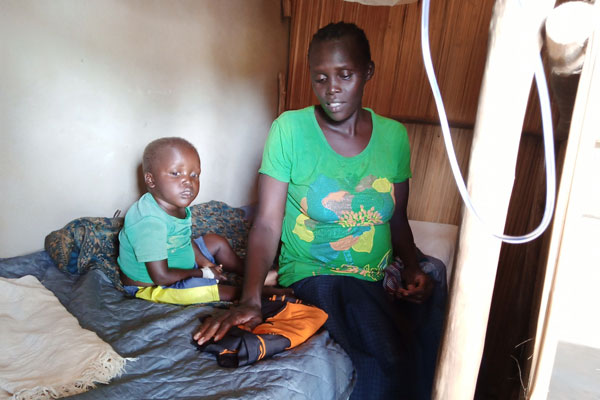Prime
Malaria cases drop by 15 per cent in Lira

A mother attends to her child with malaria at a clinic in Aboke Sub-county, Kole District, last year. In Lira District, malaria cases have dropped by 15.8 per cent. PHOTO | FILE
What you need to know:
- Data obtained from Lira District biostatician Geoffrey Ariko indicates that between January 2020 and March 2021, the rate of malaria incidences in the district reduced from 29.1 per cent to as low as 13.3 per cent.
Malaria cases in Lira District have dropped by 15.8 per cent due to intervention by the government through the Indoor Residual Spray (IRS) programme.
Data obtained from Lira District biostatician Geoffrey Ariko indicates that between January 2020 and March 2021, the rate of malaria incidences in the district reduced from 29.1 per cent to as low as 13.3 per cent.
Mr Ariko said of the 100 people who were sampled at outpatient departments in health facilities across Lira, only 12 tested positive for malaria.
“In 2012, when the IRS programme was introduced, the malaria prevalence in Lira was at 38 per cent but because of many interventions such as spraying houses [IRS], mosquito nets distribution and anti-malarial drugs, the graph started declining,” he said on Tuesday.
Ms Harriet Businge, the communication officer of Community Foundation for Development Uganda, a non-governmental organisation, urged the community to embrace all health interventions if they are to win the war against malaria.
“This is because if they only take up one intervention and leave the rest, then the IRS programme will have a minimal impact,” she said.
Malaria spray plan
Lira District will again kick start the IRS programme on April 26 with 17,258 households.
Mr Rashid Mwesige Etwop, the Lira District vector control officer, said they have already trained the teams that will conduct the programme.
He urged the community to stop the negative mindset that insecticides affect people’s manhood.
Malaria causes around 500 million death every year globally.



